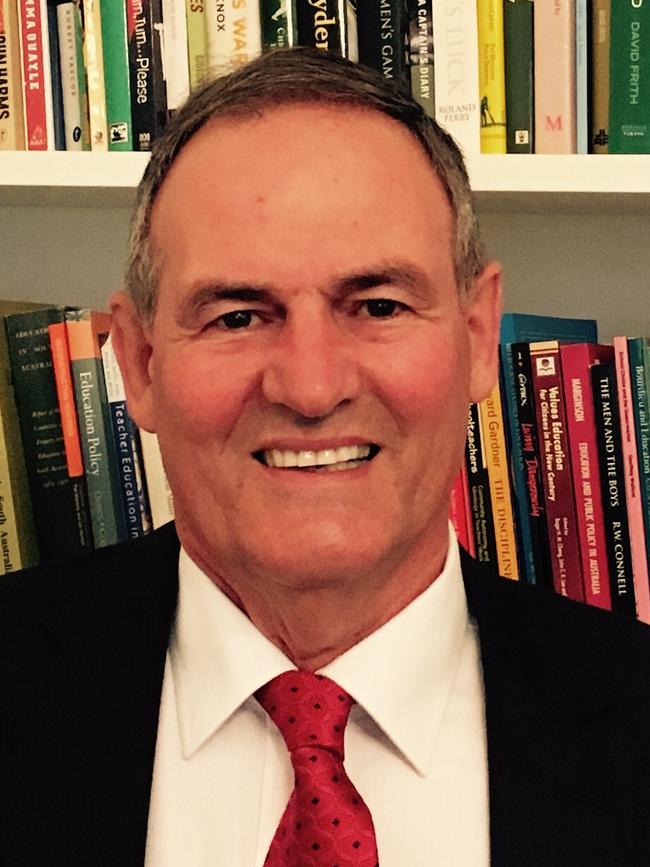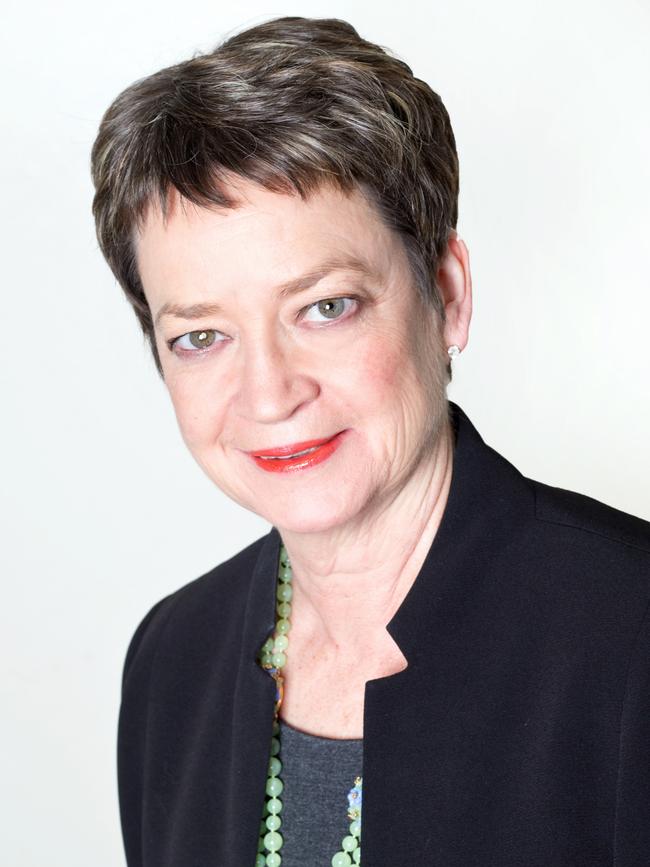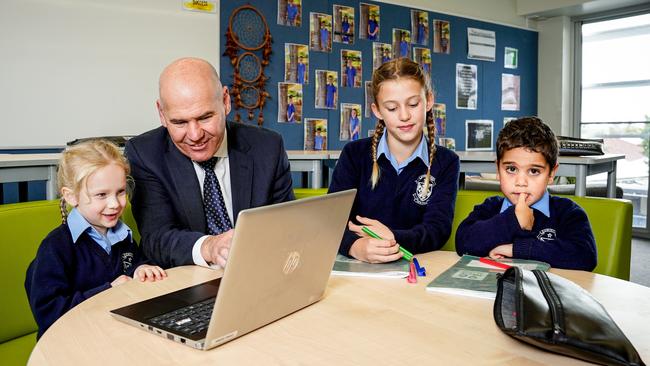Compare how much government funding is received by 75 SA schools across the public, private and Catholic sectors
Some SA private schools are getting thousands of dollars more government funding than some public schools, new data shows. Explore the table.
SA News
Don't miss out on the headlines from SA News. Followed categories will be added to My News.
Many of the state’s private schools receive more taxpayer money per student than some government schools, prompting experts to say the funding system is “as unfair as it’s ever been”.
The Sunday Mail compiled data from the federal MySchool website – the only publicly available source – for the 25 largest schools by student numbers in each of the public, Catholic and independent sectors.
Of those, six independent and 15 Catholic schools received more combined federal and state funds in 2019 – the most recent year recorded – than the lowest-funded government schools.
Independent schools that charge parents modest fees, such as Tyndale Christian school which received $13,867 in government funding per student, St Martin’s Lutheran and Prescott College, were well supported by taxpayers – and not only compared to long-established, high-fee independents.
They were also funded well in excess of public schools Glenunga International High on $11,916 and Charles Campbell College $11,985.
More than 10 Catholic schools received at least $14,000 per student, while the highest was nearly $17,000 for Mount Carmel College.
UniSA education researcher Alan Reid said the current funding model was “as unfair as it has ever been” and an “affront to democracy”.
“The Gonski model (a 2011 national review) was meant to reduce inequalities in resources, and yet successive governments have dismantled its basic principles, such as being sector blind and needs-based,” Emeritus Professor Reid said.
“Today, there are many private schools receiving more money from the taxpayer than public schools. And when school fees are added into the total mix, the huge resource differentials are magnified.
“Across Australia, the total income per student in independent schools is 50 per cent higher than for public schools.”
State opposition education spokesman Blair Boyer said a 2018 funding agreement between SA and the Commonwealth had “abandoned public schools” and, if Labor were elected at the March state election, it would seek to renegotiate the deal which expires at the end of 2023.
But both state Education Minister John Gardner and the federal education department defended the agreement, saying it had delivered overall funding increases.
Mr Gardner said low-fee private schools that were in poorer areas and had higher proportions of students with special needs attracted “funding reflecting those circumstances, especially if they are smaller or more remote”.
“In some cases this may lead to such a school receiving as much funding or more than a large government school serving a more advantaged community with lower levels of disadvantage,” he said.
Among the schools analysed by the Sunday Mail, government funding per student varied from $5895 for high-fee independent Seymour College at Glen Osmond to $21,972 for public Roma Mitchell Secondary at Gepps Cross.
The median-funded school in each group of 25 was Eastern Fleurieu R-12 for the government sector on $13,634 per student, Blackfriars’ Priory on $13,599 for Catholic schools and King’s Baptist Grammar on $10,432 for independents.
The Australian Curriculum Assessment and Reporting Authority, which runs MySchool, says the financial figures are “designed to provide parents, teachers and governments with a clear picture of the resources provided to schools to support the education of their students”.
But the independent and Catholic sectors argued funding formulae and agreements between state and federal governments were complex and the data should be viewed with caution.


Association of Independent Schools of SA chief executive Carolyn Grantskalns said schools in her sector had to pay individually for administration, insurance, staff recruitment, regulatory reporting, digital services and other costs that were provided to government schools through a central bureaucracy.
“ACARA do their best but their website itself says it is not a reliable way to assess school income or expenditure,” Ms Grantskalns said.
“School funding is inevitably complex, particularly if it is constructed around the needs of individual students.
“Over a long period of time, it is where governments have settled as being best way to address disadvantage.”
But SA Secondary Principals Association chief executive Peter Mader said public school leaders did not believe they were getting a fair deal, arguing money used to run the public education bureaucracy left less for schools themselves.

The SA Commission for Catholic Schools receives “block funding” for most of the sector, then decides how it is allocated to individual schools.
Catholic Education SA director Neil McGoran said many Catholic schools were in lower socio-economic areas and catered for vulnerable and disadvantaged children, thereby attracting more supplementary funds.
“The funding model is designed to ensure equity and fair access to extra funding for the students who need it most,” Dr McGoran said.
“The model ensures that when you compare a government school and a non-government school with a similar (student) cohort, the government school will always receive more funding than the Catholic school.”
Among the 25 biggest Catholic schools receiving high levels of taxpayer funds, Mt Carmel, Thomas More and Cardijn colleges have specialist units for children with disabilities.
More Coverage
Originally published as Compare how much government funding is received by 75 SA schools across the public, private and Catholic sectors




